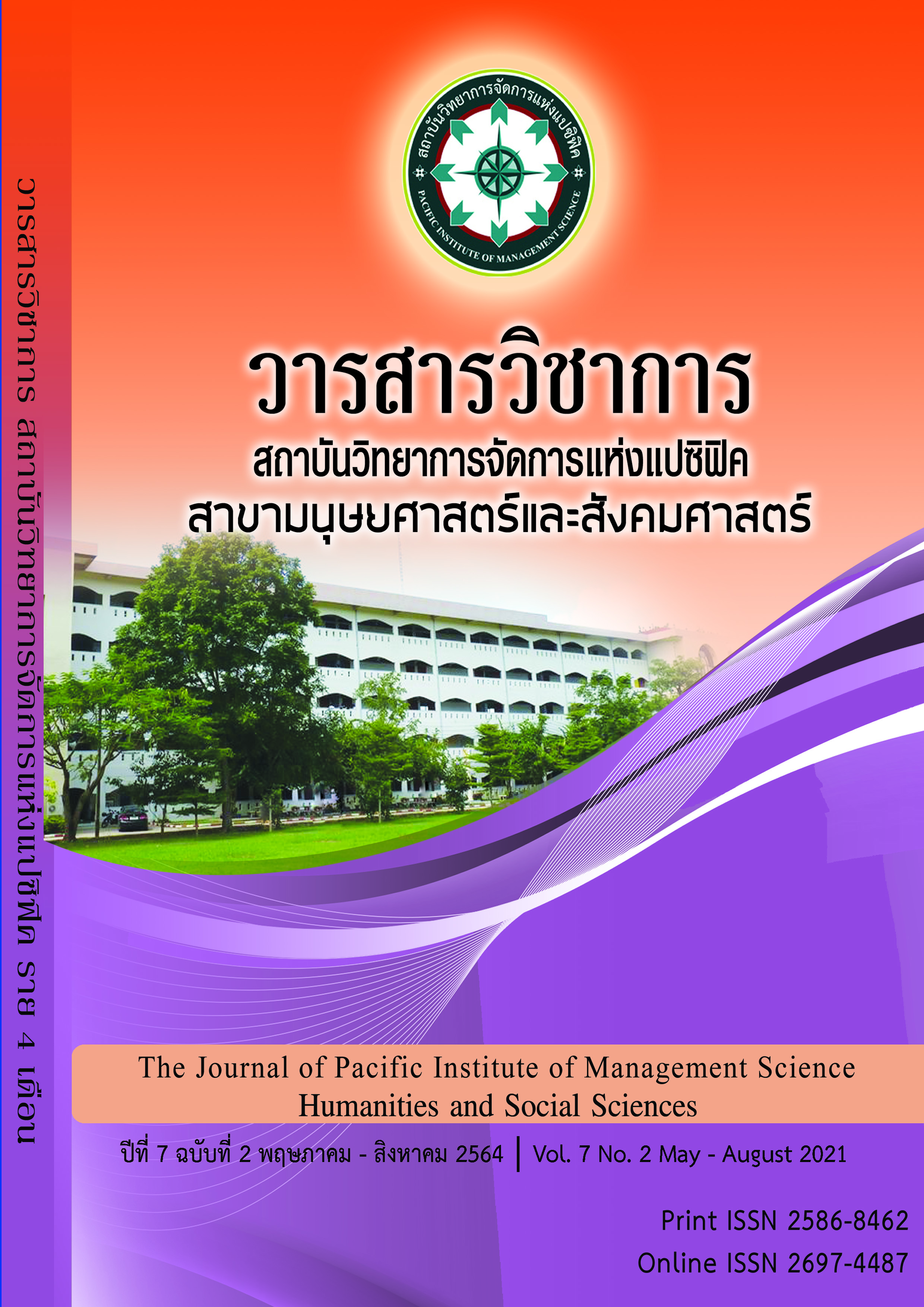The Attitudes of People in Amphoe Muang Udon Thani towards Development of "Sawasdee-Phayaban" Robot
Keywords:
Robots, Medical Robots, Sawasdee-Phayaban Robot, Robot Body, Robot FeaturesAbstract
The objectives of this research are as follows: 1) to study the behaviors and opinions of people in Amphoe Muang Udon Thani towards development of "Sawasdee-Phayaban" robot; and 2) to present the guidelines for designing and developing a prototype of "Sawasdee-Phayaban" robot in terms of robot body and features. This research utilized a mixed method, combining quantitative and qualitative methods. In the quantitative research part, the sample consisted 400 elderly and people in Amphoe Muang, Udon Thani province. Data were collected via a questionnaire and analyzed with a descriptive statistic. In the qualitative research component, study on documentary research and in-depth interviews were performed with 10 Medical personnel in Amphoe Muang, Udon Thani province. They were selected by purposive sampling. Data were then analyzed with content analysis.
The research findings showed that: 1) the behaviors and opinions of people in Amphoe Muang Udon Thani towards development of "Sawasdee-Phayaban" robot, in the robot body part, was overall at 20.1 and in each individual aspect at a high level; in the features part, were rated at a high level in overall at 4.42; and 2) the guidelines for designing and developing a prototype of "Sawasdee-Phayaban" robot, in terms of robot body part, should focus on developing mechanisms designed to be able to move around, robotic material should be safe, standardized, and resistant to impact; and features part, the robot should have a features that can help measure body temperature with an accurate intelligent, emergency call button, and system of care and follow-up symptoms to replace doctors and nurses etc.
References
Dobson, R. (2004). Meet Rudy, the world’s first “robodoc.”. BMJ: British Medical J., 329(7464): 474.
Nomura T, Sugimoto K, Syrdal DS, Dautenhahn K. (2012). Social acceptance of humanoid robots in Japan: A survey for development of the Frankenstein syndrome questionnaire. Humanoid Robots (Humanoids), 12th IEEERAS International Conference on 2012. 242–247.
Perez-Vidal C, Carpintero E, Garcia-Aracil N, Sabater-Navarro JM, Azorin JM, Candela A. (2012). Steps in the development of a robotic scrub nurse. Robot Auton Syst, 60(6), 901–911.
กรมควบคุมโรค. (2563). โรคติดเชื้อไวรัสโคโรนา 2019 (COVID-19). สืบค้นเมื่อ สิงหาคม 10, 2563, จาก https://covid19.ddc.moph.go.th/
ชนวีร์ สุรชาตรี และธวัชชัย แพชะมัด. (2560). เทคโนโลยีหุ่นยนต์ขนาดไมโครเมตรหรือนาโนเมตรเพื่อใช้ทางการแพทย์และเภสัชกรรม. ไทยเภสัชศาสตร์และวิทยาการสุขภาพ, 12 (2), 86-90.
ณรงค์ กุลนิเทศ และ สุดาวรรณ สมใจ. (2558). ระเบียบวิธีวิจัยชั้นสูงและการออกแบบวิจัย. กรุงเทพฯ: มาสเตอร์พรินท์ สามเสน.
ดุรงค์ฤทธิ์ ตรีภาค และ พีระยศ ภมรศิลปะธรรม. (2559). หุ่นยนต์ทางการแพทย์และเภสัชกรรม. ข่าวไทยเกี่ยวกับเภสัชศาสตร์ (TBPS), 11, 61-75.
พิมพ์ฉัตร์ แจ่มชัดใจ และ กัลยา อุดมวิทิต. (2552). ประเทศไทยกับการพัฒนาหุ่นยนต์. ศูนย์เทคโนโลยีอิเล็กทรอนิกส์และคอมพิวเตอร์แห่งชาติ. สืบค้นเมื่อ สิงหาคม 10, 2563. จาก http://www.tpa.or.th/publisher/pdfFileDownloadS/p40-45.pdf
มนิสรา ชัยสุข, กฤษฎา จารุพิพัฒนกุล, เศรษฐกาล โปร่งนุช และ รวิ อุตตมธนินทร์. (2558). การสร้างต้นแบบหุ่นยนต์ดูดฝุ่นอัตโนมัติรองรับการควบคุมผ่านสมาร์ทโฟน. วารสารวิชาการเทคโนโลยีอุตสาหกรรม : มหาวิทยาลัยราชภัฏสวนสุนันทา, 3(3), 4 - 15.
วิทวัส คล้ายนิล. (2551). การควบคุมหุ่นยนต์ช่วยเหลือผู้ป่วยระยะไกลผ่านระบบเครือข่ายไร้สาย. สาขาวิชาเทคโนโลยี สารสนเทศ ภาควิชาเทคโนโลยีสารสนเทศ: มหาวิทยาลัยเทคโนโลยีพระจอมเกล้าพระนครเหนือ.
Downloads
Published
Issue
Section
License
Copyright (c) 2021 Pacific Institute of Management Science

This work is licensed under a Creative Commons Attribution-NonCommercial-NoDerivatives 4.0 International License.
บทความที่ได้รับการตีพิมพ์เป็นลิขสิทธิ์ของ สถาบันวิทยาการจัดการแห่งแปซิฟิค
ข้อความที่ปรากฏในบทความแต่ละเรื่องในวารสารวิชาการเล่มนี้เป็นความคิดเห็นส่วนตัวของผู้เขียนแต่ละท่านไม่เกี่ยวข้องกับสถาบันวิทยาการจัดการแห่งแปซิฟิค และคณาจารย์ท่านอื่นๆในสถาบันฯ แต่อย่างใด ความรับผิดชอบองค์ประกอบทั้งหมดของบทความแต่ละเรื่องเป็นของผู้เขียนแต่ละท่าน หากมีความผิดพลาดใดๆ ผู้เขียนแต่ละท่านจะรับผิดชอบบทความของตนเองแต่ผู้เดียว







